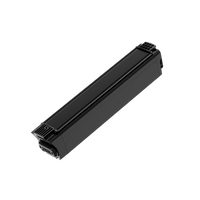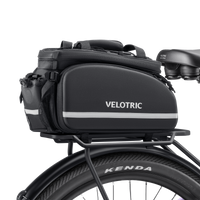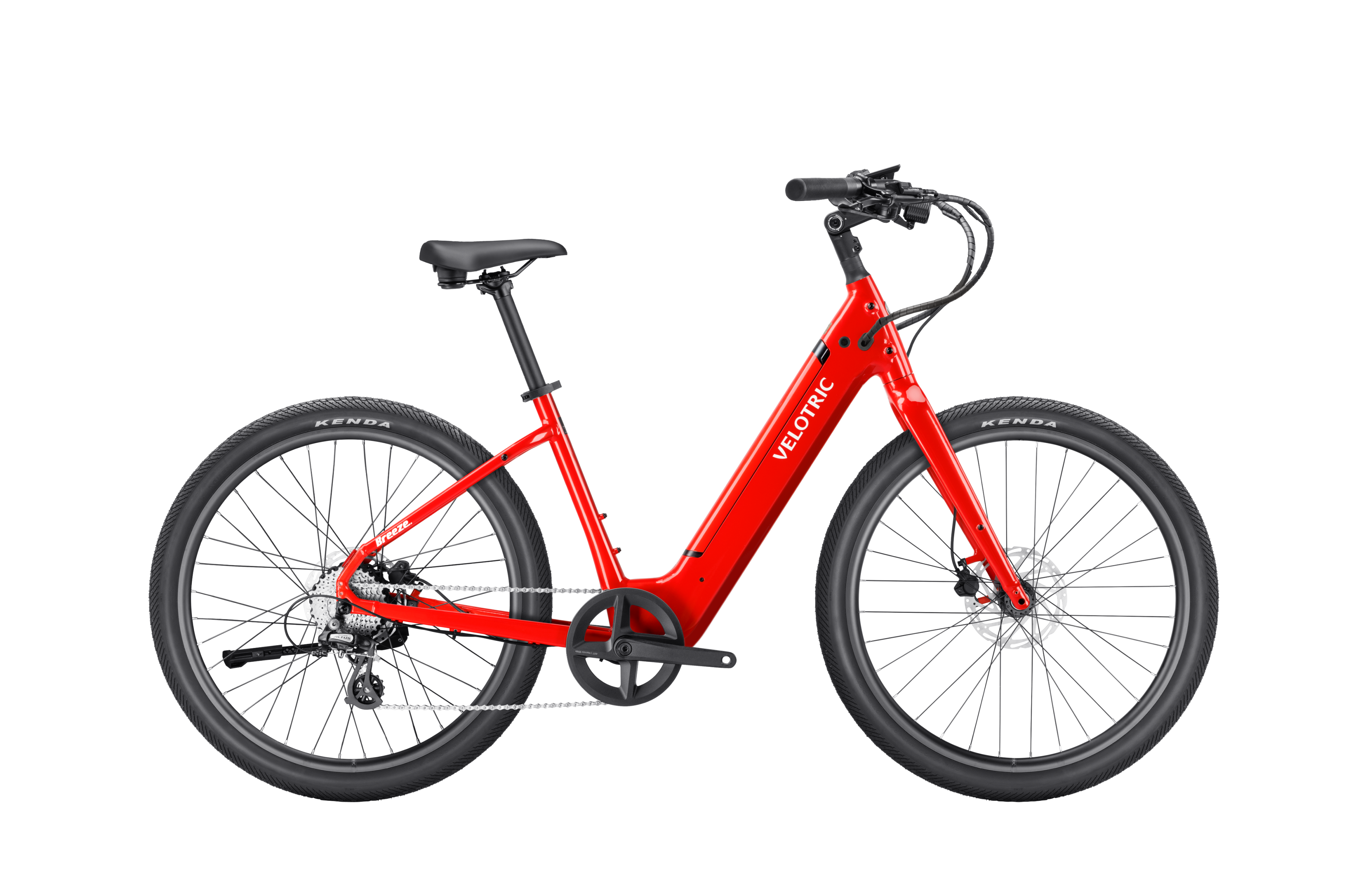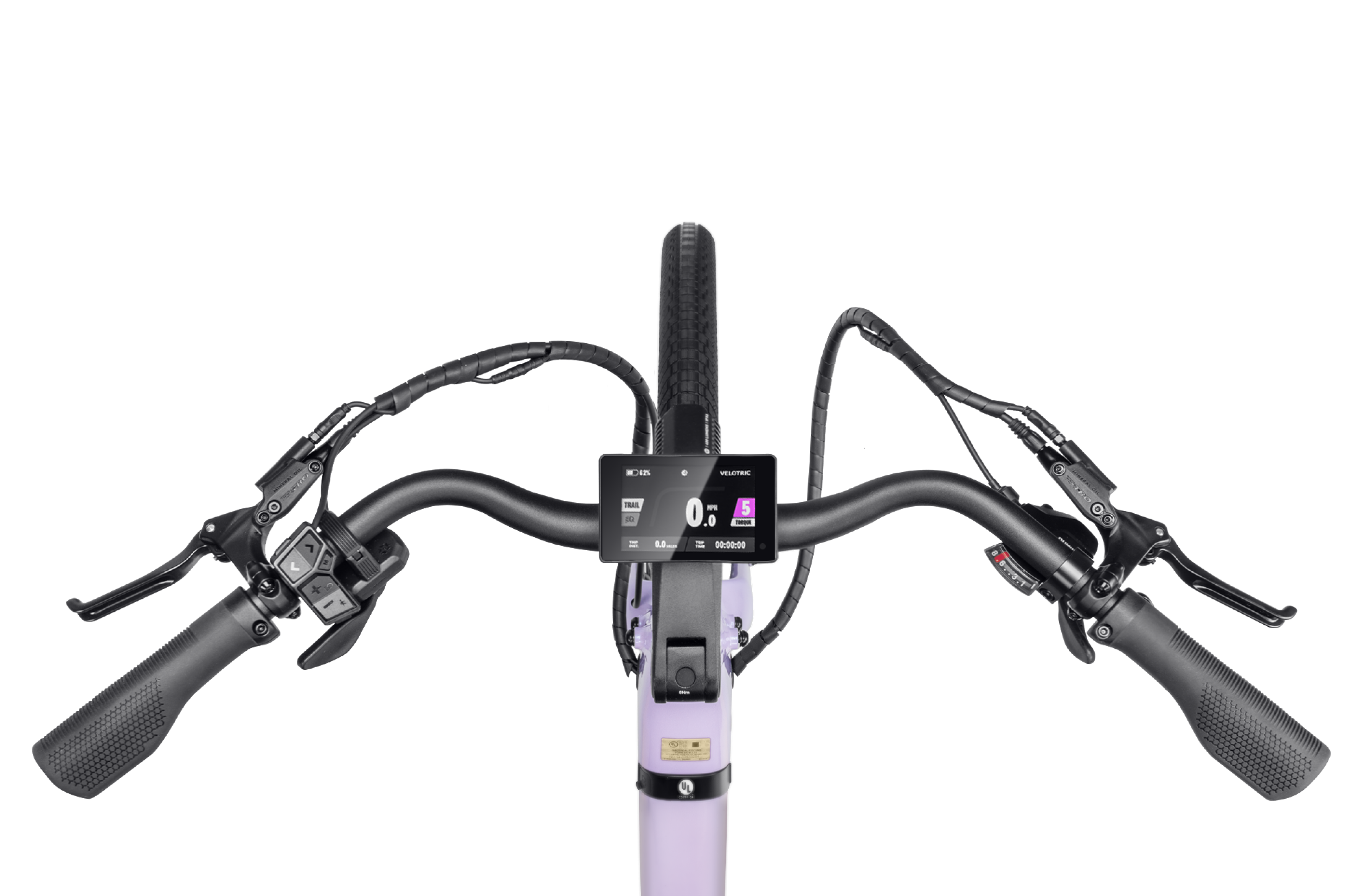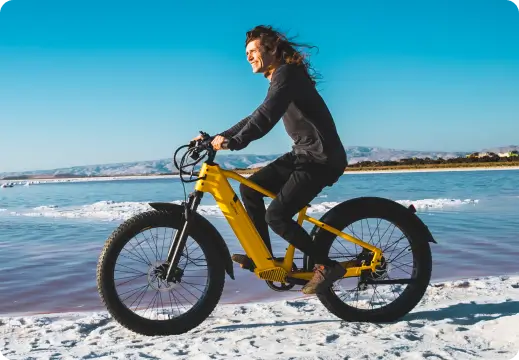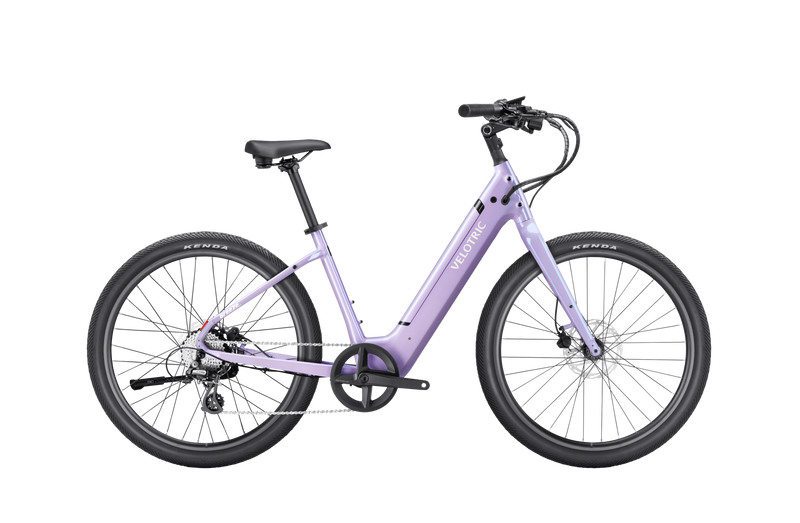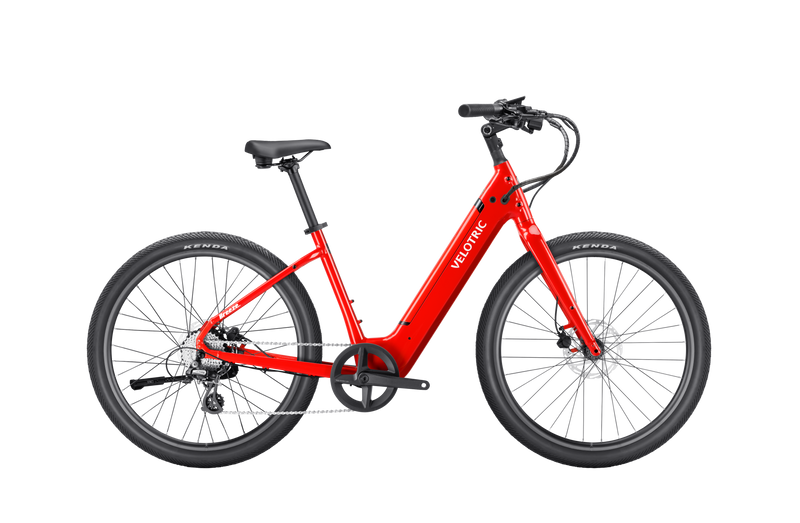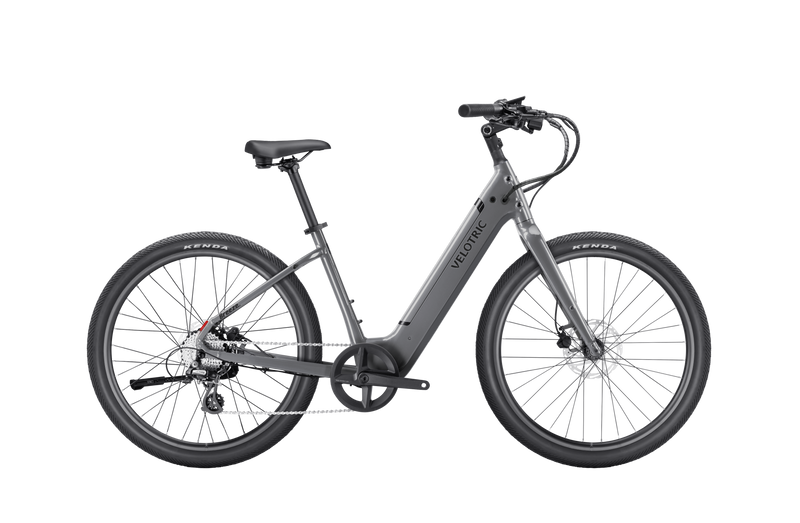If you’re in the market for a stylish, comfortable cruiser‑style e‑bike that blends commuting and leisure, both the Velotric Breeze 1 and the Aventon Pace 500.3 deserve a close look. In this comparison we’ll break down the specs side‑by‑side, discuss real‑world ride feel, highlight what each model does best (and where each has trade‑offs), and help you decide which one might be the better fit for your needs.
Contents
Price & Availability

- Velotric Breeze 1: $1,799
- Aventon Pace 500.3: $1,799
Detailed Overview:
Both bikes sit comfortably in the mid-range pricing tier for premium cruiser e-bikes. With identical MSRP, neither has a price advantage, which puts greater emphasis on features, ride quality, and real-world performance. If you’re comparing value, you’ll want to look beyond the price tag to what you’re getting per dollar—and that’s exactly what we’ll do next.
Frame Design, Sizes & Fit
| Cruiser Ebike | Velotric Breeze 1 | Aventon Pace 500.3 |
|---|---|---|
| Ebike | ||
| Frame Type | Step-through only, 2 size options | Step-through and Step-over |
| Rider Height Range | Regular: 4'11" - 5'8" Large: 5'6" - 6'4" |
Step-through:4'11" - 6'1" Step-over:5'3" - 6'4" |
| Frame Material | Triple-Butted Aluminum Alloy | Single-Butted Aluminum Alloy |
Expanded Comparison:
Velotric takes a durability lead with its triple-butted frame, offering better strength-to-weight ratio and improved shock absorption. This results in a sturdier yet lighter bike that feels solid on bumps and potholes. Aventon’s frame, while strong, uses single-butted aluminum, which is less refined but still reliable for casual rides.
Where Aventon shines is frame versatility: it offers both step-through and step-over versions, appealing to a broader range of riders. Velotric keeps it simple with two well-sized step-through options, which is great for easy mounting and dismounting — especially for seniors or riders with mobility concerns.
Learn more about Velotric Breeze 1
Motor Performance & Riding Power
| Cruiser Ebike | Velotric Breeze 1 | Aventon Pace 500.3 |
|---|---|---|
| Motor | 750W, 65Nm Torque | 48V, 500w sustained, 864w peak brushless hub motor |
| Max Speed | 12–28 MPH (Class 1/2/3 adjustable) | 20MPH (Adjustable to 28) |
| Sensor Type | Torque + Cadence Sensor | Torque Sensor |
Expanded Comparison:
If you’re riding hilly terrain, pulling cargo, or just want more “zip,” the Velotric Breeze 1 wins decisively. With 750 watts of sustained power and 65Nm of torque, it climbs, accelerates, and cruises with confidence — especially for heavier riders or those who use throttle often.
Aventon’s 500W motor is still quite responsive, especially with the torque sensor for smooth pedal-assist engagement. It’s ideal for riders who prefer a natural, bike-like feel.
Battery Life, Range & Safety
| Cruiser Ebike | Velotric Breeze 1 | Aventon Pace 500.3 |
|---|---|---|
| Battery Capacity | 48V, 13.4Ah (627Wh) | 48V, 12.8Ah (614Wh) |
| Range | Up to 70 miles | Up to 60 miles |
| Water Resistance | IPX6 (Highly water-resistant) | IPX4 (Moderate protection) |
| Charging | 3.0A Fast Charger | 3 Amp Fast Charger |
| Safety Certifications | UL 2849 & UL 2271 | UL 2849 & UL 2271 |
Expanded Comparison:
Velotric not only offers more watt-hours, but also has better waterproofing (IPX6 vs IPX4) — which matters if you get caught in the rain or ride near the beach. The slightly larger battery translates to longer range and fewer charges.
Both models include UL safety certifications, giving peace of mind around battery fire safety — a critical feature in 2025 where e-bike safety standards are tightening. For those who want extended range and rugged reliability, Velotric again has the edge.
Components, Tires & Gearing
| Cruiser Ebike | Velotric Breeze 1 | Aventon Pace 500.3 |
|---|---|---|
| Tires | 27.5x2.2" Kenda puncture-resistant | 27.5x2.1" puncture-resistant |
| Brakes | Tektro Hydraulic Disc Brakes | Hydraulic Disc Brakes |
| Drivetrain | 46T-11/32T | 48T-12/32T |
| Fork | Aluminum Alloy | AE-E08 PACE V2 AL Fork |
| Gearing | Shimano 8-speed | Shimano 8-speed |
Expanded Comparison:
On the surface, both bikes share many of the same trusted components like Shimano gears and hydraulic disc brakes — perfect for responsive stopping in all weather.
Velotric’s slightly wider 2.2" tires offer more grip and better comfort on bumpy roads or unpaved paths, while Aventon’s 2.1" are better for paved urban commuting. The Tektro hydraulic brakes on the Breeze are a top-tier component, known for their modulation and stopping power.
Smart Features & Display
| Cruiser Ebike | Velotric Breeze 1 | Aventon Pace 500.3 |
|---|---|---|
| Display | ||
| Display | 3.5” Full Color, High Brightness, BT | LCD Smart “Easy Read” |
| App Compatibility | Velotric App + Apple Find My™ | Aventon App Only |
| Lighting System | 400LM LED Headlight + Turn Signals | Integrated Lights + Turn Signals |
Expanded Comparison:
Tech lovers, this is your section. Velotric offers a Bluetooth-enabled, full-color display with higher brightness — easier to read in sunlight. The biggest win? Apple Find My™ integration, which adds theft protection and GPS-like tracking — a rare but major feature in the e-bike space.
Both bikes offer app-based customization, but Velotric’s combination of visibility, connectivity, and safety (via 400-lumen lighting and rear signals) makes it a smarter pick for urban and night riders.
Learn more about Velotric Breeze 1
Comfort, Ergonomics & Weight
| Cruiser Ebike | Velotric Breeze 1 | Aventon Pace 500.3 |
|---|---|---|
| Saddle | Ergonomic Velotric Comfort Saddle | Standard Aventon Saddle |
| Handlebar | Swept-back Aluminum (660mm/680mm) | Swept-back Aluminum (31.8mm) |
| Seatpost | 30.9mm, 350mm Aluminum Alloy | Forged Alloy, 2-Bolt Clamp |
| Max Rider Weight | 330 lbs | 300 lbs |
| Bike Weight | 48 lbs | 52 lbs |
Expanded Comparison:
Comfort is king on cruiser bikes, and Velotric delivers an elite experience. The extra-padded saddle, swept-back handlebars, and larger fit range create a plush, upright ride. Weighing in at just 48 lbs, it’s also easier to lift, transport, or load onto a rack.
Aventon’s setup is still very comfortable, but it caps at a lower load limit (300 lbs) and is a bit heavier, which might matter if you frequently lift or transport your e-bike.
Final Verdict: Which Cruiser E-Bike Should You Choose in 2025?
✅ Choose the Velotric Breeze 1 if:
-
You want more power (750W) and better acceleration
-
You value range, waterproofing (IPX6), and build quality
-
Smart tech matters — especially Apple Find My™ & high-lumen lights
-
You need a lighter e-bike that handles more weight (330 lbs max)
✅ Choose the Aventon Pace 500.3 if:
-
You prefer the flexibility of step-over or step-through frames
-
You're focused on everyday city commuting and comfort riding
-
You want good performance with clean styling and value
FAQs
Q: What does “Class 1/2/3” mean for e‑bikes and why is it important?
A: These classes define how much assist the bike gives and how fast you can ride with motor help. For example, Class 1 bikes give pedal‑assist up to 20 mph, Class 2 include throttle up to 20 mph, and Class 3 pedal‑assist up to 28 mph. Depending on where you live, local laws and where you can ride (bike paths, trails) may vary by class, so choosing a bike like the ones compared (which support Class 3) helps future‑proof your rides.
Q: How much maintenance do cruiser e‑bikes require compared to regular bikes?
A: Similar basic upkeep as regular bikes — keep tires properly inflated, brakes adjusted, chain maintained. The difference is the motor and battery require periodic checks, firmware/app updates if applicable, and proper charging/ storage for the battery to extend lifespan. For example, UL certification ensures safer battery performance. The bikes you compare have UL 2849 & UL 2271 certification, which helps with reliability.
Q: Can I carry cargo or a passenger on these cruiser e‑bikes?
A: Yes — but you must check the maximum load rating of the bike (frame, wheels, tires). In your comparison the Velotric Breeze 1 supports a max load of 330 lbs, while the Aventon Pace 500.3 lists up to 300 lbs. If you plan to add racks, panniers or a passenger seat, ensure the combined weight stays within that limit and that the rack is rated for e‑bike duty.
Q: How does the type of sensor (torque vs cadence) affect ride feel?
A: A torque sensor measures how hard you pedal and delivers motor support in proportion — more natural, smoother. A cadence sensor detects pedal movement and supplies a fixed amount of boost once you pedal. Bikes that offer torque sensor and cadence sensor systems tend to feel more like a traditional bike with assist. In your comparison, one model offers a torque/cadence hybrid sensor — that’s a strong plus for ride quality.

























